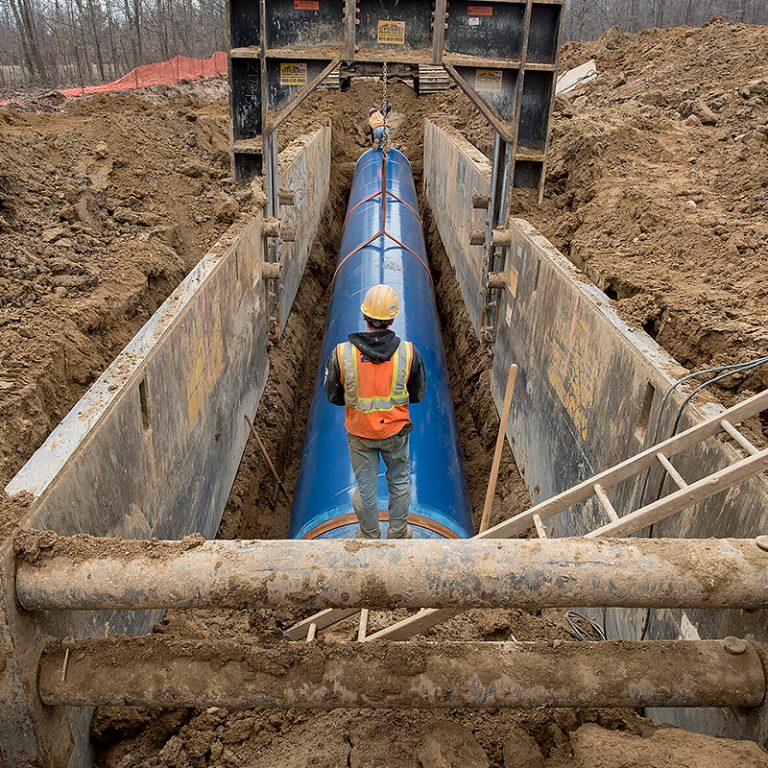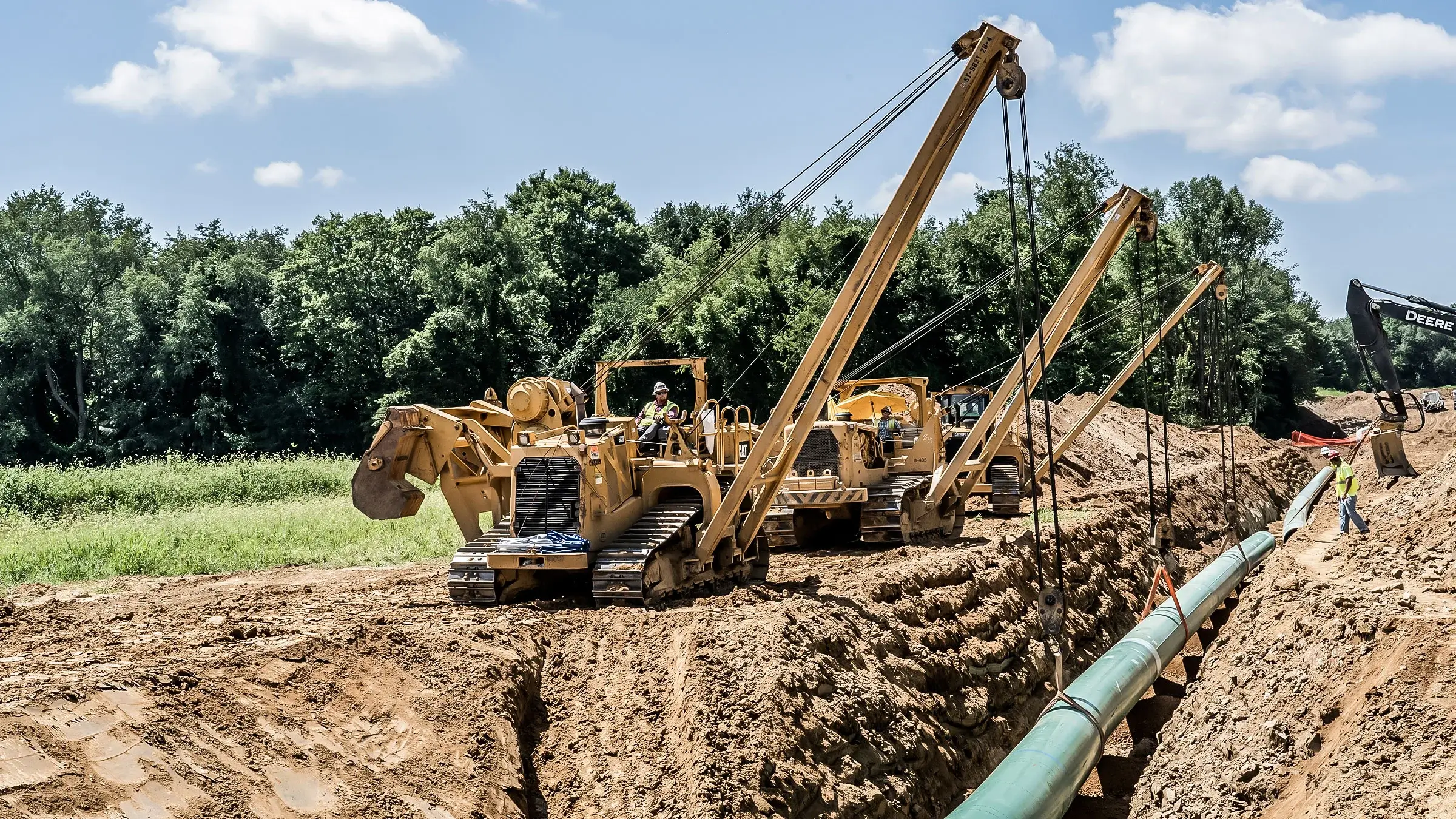What to Expect When Hiring Creek Pipe roustabout Teams
The Relevance of Pipeline Construction: Discovering the Services Provided in the Industry
Pipeline construction is a vital element of contemporary facilities. It promotes the transportation of necessary sources like oil, gas, and water. The sector incorporates different solutions, including preparation, site preparation, and installment. Each phase requires precision and adherence to safety standards. As neighborhoods depend upon these systems for their resources, recognizing the ins and outs of pipe construction discloses its importance and prospective difficulties. What aspects affect the success of these jobs?
Introduction of Pipeline Construction Providers
Pipeline construction services encompass a series of specific activities created to promote the installation of pipelines for delivering various compounds, consisting of oil, gas, and water. These solutions normally consist of website preparation, excavation, installment of pipeline sectors, and backfilling. Knowledgeable labor and advanced tools are essential for assuring each phase is carried out with precision and safety.Safety methods are paramount, as these jobs frequently involve working with harmful products and in challenging settings. Quality control measures ascertain that the pipes meet sector criteria and regulations. Additionally, the services may include trenchless technology, which reduces surface disruption.Environmental factors to consider play a substantial duty in pipeline construction, requiring assessments and reductions to safeguard surrounding environments. In general, pipe construction services are vital for establishing the framework required for power and water circulation, supporting both financial growth and societal demands.
Preparation and Design in Pipeline Projects
Effective planning and design are critical components of successful pipe tasks, ensuring that all aspects are meticulously resolved prior to construction begins. This stage entails thorough expediency researches that evaluate the technological, economic, and environmental aspects influencing the job. Designers and developers team up to develop comprehensive strategies that detail the pipeline course, materials, and construction techniques, lining up with regulatory demands and industry standards.Advanced software application and modeling strategies are commonly utilized to replicate different scenarios, optimizing the layout for effectiveness and safety. Environmental impact evaluations are performed to minimize possible damage to communities and neighborhoods, reflecting a dedication to sustainable techniques. In addition, stakeholder engagement is important, cultivating interaction and dealing with issues from impacted celebrations. Inevitably, efficient planning and design established the structure for a pipe task, lessening threats and ensuring a streamlined construction procedure, eventually adding to the overall success of the operation.
Site Preparation and Excavation
Complete website prep work and excavation are necessary action in the pipeline construction process. This phase involves a comprehensive assessment of the land where the pipeline will certainly be mounted. Task groups carry out studies to recognize dirt kinds, topography, and existing energy lines to ensure a risk-free and effective excavation. Correct website preparation reduces ecological impact and promotes smoother construction operations.Excavation follows, where hefty equipment is employed to get rid of soil and rock, producing a trench that fulfills the defined deepness and width for the pipe. This procedure has to comply with safety and security laws and ecological standards to prevent damage to surrounding ecosystems.Additionally, disintegration control actions are applied to maintain the website during and after excavation. Reliable website preparation and excavation add greatly to the total success of pipeline projects, laying a strong structure for the subsequent stages of construction.
Pipeline Installation Strategies
Pipeline installation strategies are essential for the effective application of infrastructure tasks. 2 famous techniques include trenchless technology, which decreases surface area disruption, and the open-cut excavation process, known for its straightforward approach. Each technique offers distinctive benefits and factors to consider depending upon project requirements and environmental variables.
Trenchless Innovation Methods
While standard methods of pipe setup commonly entail comprehensive excavation, trenchless innovation techniques provide a more efficient and environmentally pleasant option. These cutting-edge techniques, such as horizontal directional boring and pipeline bursting, minimize surface disruption by permitting the setup of pipelines without extensive digging. This not only lowers the environmental impact however additionally greatly reduces labor and repair prices. Trenchless methods help with the setup of pipes in city locations where traditional excavation would be unwise or harmful to existing framework. In addition, these techniques can accommodate different dirt kinds and problems, making them functional solutions for pipeline construction. Eventually, trenchless innovation stands for a substantial advancement in the pipeline market, promoting sustainability and functional efficiency.

Open-Cut Excavation Process
Open-cut excavation stays a basic technique in pipe setup, characterized by the direct excavation of a trench to lay pipelines. This approach involves getting rid of soil and various other products to produce a trench of enough depth and size, enabling the positioning of pipes at the required quality. Open-cut excavation is often liked for its cost-effectiveness and simplicity, particularly in areas with secure soil conditions. Nevertheless, it can interrupt surface tasks and needs mindful planning to manage website traffic and environmental impacts. go to this site Precaution need to be implemented to shield employees and close-by facilities during the excavation procedure. On the whole, while open-cut excavation might not be ideal for all surfaces, it stays a commonly used strategy in pipe construction.
Evaluating and Quality Control
Testing and image source quality control are crucial elements in pipe construction, ensuring that installments fulfill well established security criteria and performance needs. Different inspection strategies and methods are used to examine material top quality and adherence to regulative compliance. This organized approach aids identify prospective issues prior to they rise, safeguarding the integrity of the pipeline system.

Examination Techniques and Techniques
Examination techniques and techniques are necessary parts in guaranteeing the stability and safety and security of pipeline construction. Different strategies, including visual assessments, ultrasonic testing, and radiographic evaluations, are used to discover issues and validate quality. Visual assessments permit for the recognition of surface area abnormalities, while ultrasonic screening makes use of acoustic waves to evaluate wall thickness and find problems inside. Radiographic examinations involve X-rays or gamma rays to create pictures of the pipe's framework, exposing surprise concerns. In addition, pressure testing is carried out to examine the pipe's integrity under operational conditions. These techniques jointly add to a complete understanding of the pipeline's condition, making it possible for timely upkeep choices and ensuring conformity with sector standards. Efficient examination is crucial for avoiding failures and promoting long-lasting operational security.
Safety Criteria Compliance
Making certain conformity with safety and security criteria is extremely important in pipe construction, as it directly impacts the task's total high quality and dependability. Sticking to established laws and standards assurances that construction practices alleviate dangers connected with pipe setup and operation. Creek Pipe roustabout. Strenuous testing protocols, consisting of non-destructive testing and pressure evaluations, are essential in confirming that pipes can stand up to the operational tensions they will experience. Quality guarantee procedures are also crucial, as they establish a structure for consistent tracking and evaluation throughout the construction process. By focusing on security criteria compliance, business not only secure workers and the environment however also boost the integrity of the pipe, eventually leading to lasting functional success and public count on the infrastructure
Material Top Quality Evaluation
Material high quality evaluation plays a considerable duty in the total integrity of pipeline construction. This process entails strenuous screening and quality assurance procedures to assure that products meet industry standards and requirements. Numerous examinations, consisting of tensile strength, rust resistance, and weld integrity evaluations, are performed to determine any prospective weak points. A thorough assessment not just assures the performance of the pipeline yet also improves safety and longevity over its lifespan. Furthermore, applying quality assurance procedures helps Extra resources minimize risks connected with material failings, which can result in expensive fixings and ecological risks. By prioritizing material quality evaluation, companies can guarantee compliance with regulatory requirements while fostering confidence among stakeholders in the integrity of their pipe systems.
Upkeep and Fixing Solutions
Maintenance and repair work solutions play an essential duty in the long life and effectiveness of pipeline systems. These solutions include routine evaluations, fixing, and corrective activities to attend to deterioration, leaks, and various other problems that may arise in time. Skilled specialists utilize advanced technologies such as ultrasonic testing and clever pigging to keep an eye on pipe honesty, making certain that any kind of prospective issues are recognized early.Additionally, maintenance programs typically include set up preventative measures made to improve system reliability and minimize the likelihood of unanticipated failures. Repair solutions may involve the replacement of broken sections, securing leaks, or employing trenchless technology for minimal interruption.
Environmental Conformity and Precaution
Pipeline systems not just require continuous upkeep and repair to work effectively but additionally have to stick to rigorous environmental conformity and security actions. These laws are vital for minimizing ecological influence and ensuring public security. Business in the pipe construction industry execute extensive environmental evaluations before project initiation, identifying potential threats to wild animals and ecosystems.Furthermore, adherence to security protocols protects employees and bordering areas. This includes routine training on emergency reaction and spill prevention techniques.To keep conformity, sectors utilize keeping an eye on innovations to spot leaks and various other abnormalities in real-time. Ecological management plans are commonly created to detail steps for dealing with unforeseen issues throughout construction.Ultimately, rigorous adherence to environmental compliance and precaution not just fulfills legal obligations however also fosters sustainable techniques within the market, promoting an equilibrium in between framework advancement and environmental stewardship.
Frequently Asked Inquiries
What Career Opportunities Are Readily Available in Pipeline Construction?
Profession chances in pipeline construction include roles such as project managers, designers, welders, and safety inspectors. These placements need diverse abilities, offering paths for growth in an essential industry of infrastructure advancement and energy distribution.

How Do Pipeline Projects Impact Citizen Communities?
Pipeline jobs substantially impact neighborhood communities by influencing financial growth, giving job chances, and improving facilities. They may additionally increase concerns regarding ecological results, land usage, and possible interruptions to community cohesion and all-natural ecosystems.
What Innovation Is Utilized in Modern Pipeline Construction?
Modern pipe construction uses innovative innovations such as GIS for mapping, drones for aerial surveys, and automated welding systems to enhance effectiveness, safety, and accuracy, inevitably helping with the effective transportation of sources across various surfaces. Creek Pipe Midland.
Just How Are Pipeline Construction Prices Approximated?
Pipeline construction expenses are estimated via comprehensive evaluations of products, labor, equipment, and governing requirements. Variables like surface, task dimension, and ecological factors to consider likewise considerably influence the overall budget plan and economic planning for construction.
What Are the Most Significant Challenges in Pipeline Construction Projects?
The largest difficulties in pipeline construction tasks include regulatory conformity, environmental concerns, logistical issues, securing funding, and handling labor lacks. Each aspect can greatly impact timelines and spending plans, making complex the total execution of the task.